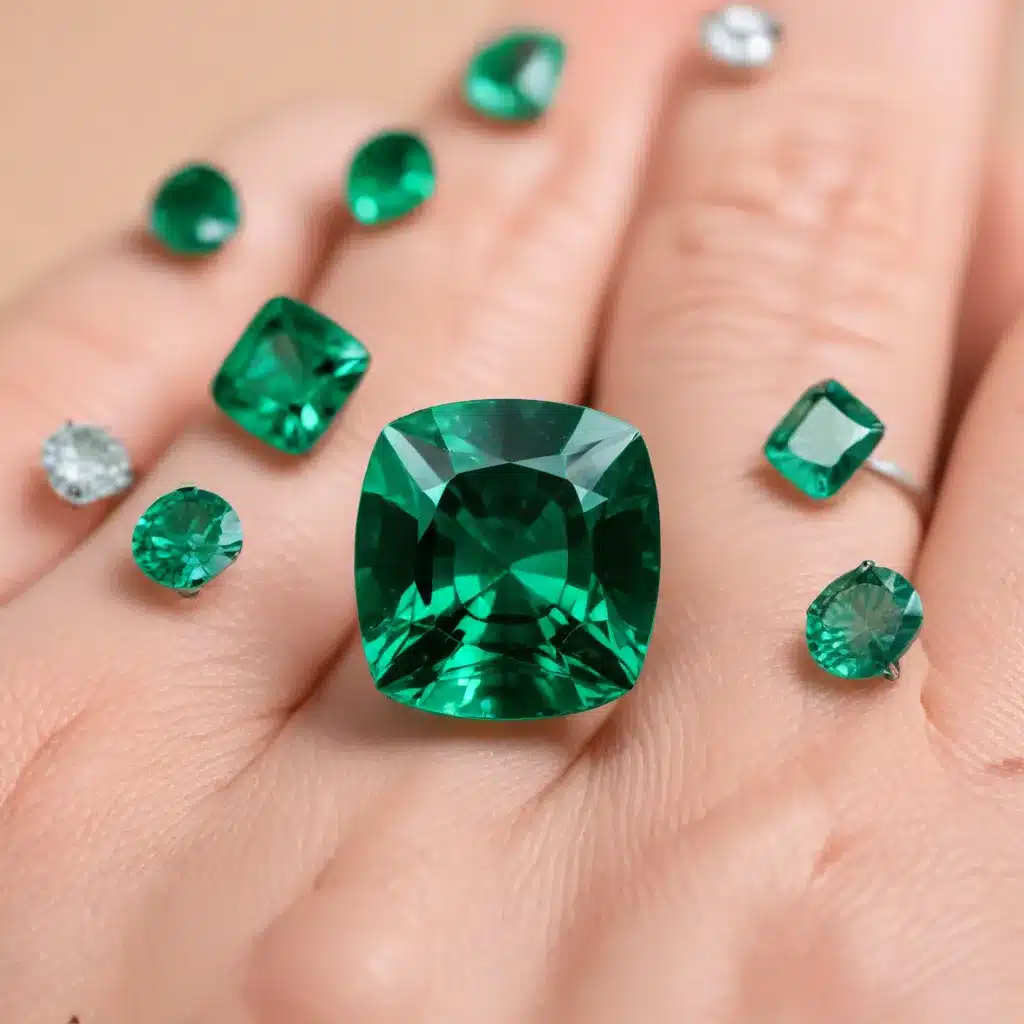
Emerald, the alluring green gemstone, has long been a symbol of luxury, elegance, and natural beauty. For centuries, this precious stone has captivated the hearts of jewelry enthusiasts, royalty, and connoisseurs alike. However, traditional emerald mining has faced growing concerns over environmental impact and ethical considerations. Fortunately, the emergence of lab-grown emeralds presents a sustainable and ethical alternative that rivals the beauty and quality of their natural counterparts.
Emerald Characteristics
Emerald is a variety of the mineral beryl, known for its distinctive green hue. This color is primarily attributed to the presence of chromium and vanadium within the gem’s crystalline structure. The most desirable emeralds exhibit a rich, pure green shade often described as “emerald green.”
Emeralds are composed of beryllium, aluminum, and silicate, with a Mohs hardness of 7.5 to 8, making them relatively soft compared to other gemstones. This softer nature can make them more susceptible to scratches and fractures, requiring gentle care and handling.
Natural emeralds often contain characteristic inclusions known as “jardin,” which are natural imperfections that contribute to the gem’s unique character. These inclusions are considered part of the emerald’s charm and can help identify genuine stones.
Conventional Emerald Mining
Historically, emeralds have been mined from various locations around the world, with major sources including Colombia, Zambia, Brazil, and Zimbabwe. Colombian emeralds, in particular, are highly prized for their exceptional color and quality.
However, traditional emerald mining has faced growing concerns over its environmental impact and ethical considerations. The extraction of these precious stones often involves the disruption of delicate ecosystems, deforestation, and the potential exploitation of local communities. This has prompted a shift towards sustainable and ethical alternatives, such as lab-grown emeralds.
Lab-Grown Emerald Technology
The creation of lab-grown emeralds involves advanced scientific techniques that mimic the natural processes that form these gems deep within the Earth’s crust. Two primary methods are used to produce synthetic emeralds: the hydrothermal synthesis and the flux-growth method.
Hydrothermal Synthesis
The hydrothermal synthesis process creates emeralds by subjecting a beryllium-containing solution to high temperatures and pressures, similar to the conditions found in natural emerald formation. This method allows for precise control over the growth conditions, resulting in highly consistent and reproducible emerald crystals.
Flux-Growth Method
The flux-growth method, on the other hand, uses a molten flux, a mixture of various minerals, to dissolve and recrystallize the beryllium and other necessary elements, effectively growing the emerald crystals. This technique enables the production of larger emerald stones with exceptional clarity and color.
Advances in laboratory technology and scientific understanding have significantly improved the quality and consistency of lab-grown emeralds, making them virtually indistinguishable from their natural counterparts.
Sustainability and Eco-Friendliness
One of the primary advantages of lab-grown emeralds is their significantly reduced environmental impact compared to traditional mining practices. By eliminating the need for resource-intensive and potentially damaging extraction methods, lab-grown emeralds offer a more sustainable and eco-friendly alternative.
The production of lab-grown emeralds is generally more energy-efficient, as it takes place in a controlled laboratory setting, reducing the carbon footprint associated with mining operations. Additionally, the ethical sourcing of materials and the elimination of potential labor exploitation issues make lab-grown emeralds a more responsible choice for conscious consumers.
Jewelry Applications
Lab-grown emeralds are versatile and can be used in a wide range of jewelry designs, from classic emerald-cut pieces to more contemporary and creative settings. Their durability and consistent quality make them well-suited for everyday wear, while their vibrant hues and clarity contribute to the timeless elegance and allure of emerald jewelry.
Emerald-cut designs, with their rectangular step-cut facets, are particularly popular for lab-grown emeralds, as this cut helps to minimize the impact of any inclusions and maximize the gem’s color. Emerald jewelry, whether in the form of rings, necklaces, earrings, or bracelets, continues to captivate and inspire jewelry enthusiasts around the world.
Market Trends and Adoption
As consumers become increasingly conscious of the environmental and ethical implications of their purchasing decisions, the demand for lab-grown emeralds has been steadily rising. Many individuals are now opting for these sustainable alternatives, recognizing the benefits they offer in terms of reduced environmental impact, ethical sourcing, and affordability.
Lab-grown emeralds are generally more affordable compared to their natural counterparts, making them more accessible to a wider range of buyers. This accessibility, combined with their exceptional quality and compatibility with a variety of jewelry designs, has contributed to the growing popularity of lab-grown emeralds in the market.
Comparison to Natural Emerald
While lab-grown emeralds share many similarities with their natural counterparts, there are some key differences that may be of interest to jewelry enthusiasts and gemstone collectors.
From a visual perspective, high-quality lab-grown emeralds can be virtually indistinguishable from natural emeralds, with their vibrant green hues and consistent clarity. However, advanced gemological techniques, such as examining the inclusion patterns and growth structures, can be used to differentiate between natural and synthetic emeralds.
In terms of performance characteristics, lab-grown emeralds often excel in durability, as they have a Mohs hardness of 8, compared to the slightly softer 7.5 to 8 range of natural emeralds. This makes lab-grown emeralds more suitable for everyday wear and less prone to scratches or fractures.
Ultimately, both natural and lab-grown emeralds offer stunning options for jewelry, and the choice often comes down to personal preferences, ethical considerations, and budgetary constraints. Regardless of their origin, emeralds continue to captivate with their timeless beauty and allure.
At Shelby Gem Factory, we are proud to offer an exquisite collection of lab-grown emerald jewelry, crafted with the utmost care and attention to detail. Our commitment to sustainability and ethical practices aligns seamlessly with the inherent beauty and vibrant hues of these remarkable gems. Discover the magic of lab-grown emeralds and let them become the centerpiece of your next jewelry creation.

